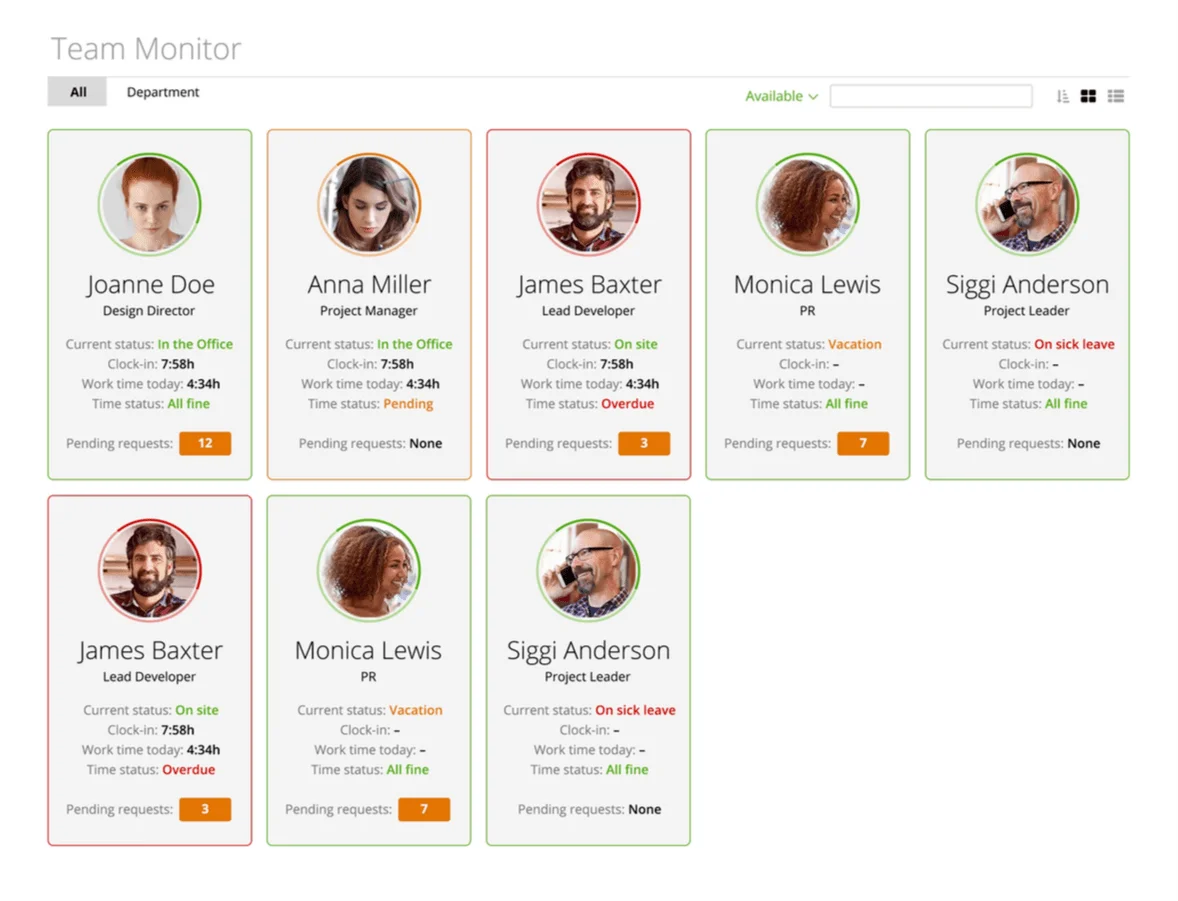Managing multiple projects simultaneously can be a daunting task. With competing deadlines, conflicting priorities, and limited resources, it’s easy to feel overwhelmed and struggle to maintain a sense of balance.
Sound familiar?
However, with effective time management techniques, you can conquer the challenges of juggling multiple projects and achieve a harmonious equilibrium.
TThe Importance of Efficient Time Management for Juggling Multiple Projects
In today’s fast-paced work environments, professionals often find themselves working on multiple projects concurrently. Whether you’re a project manager, a team lead, or an individual contributor, the ability to navigate through these complex project landscapes is crucial for success.
Successful project managers excel at prioritizing, organizing, and managing multiple projects efficiently, ensuring that tasks are completed on time and productivity is maximized.
Efficient time management plays a pivotal role in ensuring that all projects progress smoothly, meet their objectives, and are delivered on time.
Key Factors To Managing Time Like a Pro
Efficient time management is the key to maintaining control over multiple projects and avoiding the chaos that can ensue from neglecting this aspect. Here are a few tips for managing your time like a pro. By effectively managing your time, you can:
![]()
Time Tracking and Business Performance Live
1. Prioritize tasks
When juggling multiple projects, it’s essential to identify and prioritize tasks based on their urgency, importance, and impact on project outcomes.
Proper prioritization helps you allocate your time and resources wisely, ensuring that critical tasks receive the attention they deserve.
2. Optimize resource allocation
Limited resources, such as manpower, budget, and equipment, need to be allocated strategically across different projects.
By managing your time efficiently, you can assess resource availability, avoid overloading team members, and prevent resource bottlenecks that could impede project progress.
3. Mitigate project conflicts
When working on multiple projects, conflicts can arise, such as overlapping deadlines, shared resources, or conflicting priorities.
By mastering time management techniques, you can proactively identify potential conflicts, develop strategies to resolve them and ensure that projects progress smoothly without unnecessary hurdles.
4. Enhance productivity and efficiency
Effective time management enables you to streamline your workflow, eliminate time-wasting activities, and optimize productivity.
By implementing efficient practices, you can allocate sufficient time to each project, avoid unnecessary multitasking, and maintain focus, resulting in improved overall efficiency.
These strategies help increase productivity when managing multiple projects by reducing distractions and ensuring that your work systems are effective.
5. Reduce stress and maintain work-life balance
The demands of multiple projects can be stressful, and without proper time management, work can overflow into personal life, causing burnout and impacting well-being.
By managing your time effectively, you can create boundaries, allocate time for personal activities, and maintain a healthy work-life balance, reducing stress levels and enhancing overall satisfaction.
Understand Your Projects
Before diving into the intricacies of time management, it’s crucial to clearly understand the projects you are working on. Each project comes with its own set of objectives, deliverables, deadlines, and dependencies.
Comprehensive project planning is essential for setting clear goals, defining responsibilities, and establishing schedules, ensuring that every aspect of the project is organized from the start.
By assessing and comprehending the unique characteristics of each project, you can effectively manage your time and resources. Here are some steps to help you understand your projects better:
1. Assess project priorities and deadlines
Start by identifying the priorities and project deadlines associated with each project. Determine which projects require immediate attention or have critical milestones approaching.
Understanding the relative importance of each project will guide your time allocation and ensure that you focus on the tasks that have the most significant impact.
2. Identify project dependencies and potential conflicts
Map out the dependencies between different projects. Identify tasks or activities that are interrelated and determine if any conflicts or overlaps exist.
By understanding these dependencies, you can plan your time effectively, allocating resources to address critical dependencies and avoiding confrontations that could hinder progress.
3. Evaluate resource allocation and availability
Consider the resources required for each project, such as the project team, budget, and equipment. Assess the availability of these resources and identify any constraints or limitations. Understanding the resource landscape will help you make informed decisions about resource allocation, ensuring that each project receives the necessary support.
By gaining a comprehensive understanding of your projects, you can develop a solid foundation for effective time management.
This understanding will serve as a guide throughout the juggling process, enabling you to make informed decisions and allocate your time and resources wisely.
Effective Time Planning Strategies
Once you have a clear understanding of your projects, it’s important to define goals for each project as a foundational step in effective time planning.
By implementing these strategies, you can organize your tasks, allocate time efficiently, and stay on track with multiple projects. Here are some key strategies to consider:
1. Prioritize tasks and activities across projects
Prioritization is essential when juggling multiple projects. Use techniques like the Eisenhower Matrix or other prioritization frameworks to categorize tasks based on their urgency and importance.
Consider using a to do list to track and prioritize tasks across projects, helping you plan workloads and monitor progress.
Identify the critical tasks that require immediate attention and focus on completing them first. By prioritizing tasks effectively, you can ensure that you allocate your time and energy to the most impactful activities across your projects.
2. Create a comprehensive project schedule
Develop a detailed project schedule that outlines the tasks, milestones, and deadlines for each project.
It is important to identify and track project milestones within the schedule, as these key deliverable dates help monitor progress, prepare for busy periods, and manage workload effectively.
Break down the projects into smaller, manageable tasks and allocate realistic time estimates for each task.
Consider dependencies and potential bottlenecks when creating the schedule. Utilize project management software or tools to streamline the scheduling process and ensure effective time allocation.
3. Leverage time management techniques
Explore techniques that can boost your productivity and efficiency. Techniques such as the Pomodoro Technique, using time blocks as a productivity technique (also known as time blocking), or the 80/20 rule can help you structure your time and maintain focus.
Experiment with different techniques to find what works best for you and apply them across your projects. These techniques can help you make the most of your time and avoid distractions or procrastination.
4. Communice and collaborate effectively
Clear communication and collaboration are crucial when managing multiple projects. Establish effective channels of communication with your team members, stakeholders, and clients.
It is essential to communicate expectations clearly to ensure alignment among all team members and stakeholders.
Ensure that everyone is aware of project priorities, deadlines, and progress. Utilize collaborative platforms for file sharing, updates, and discussions to streamline communication across projects.
By fostering effective communication, you can enhance coordination, reduce misunderstandings, and improve overall project efficiency.
5. Monitor and adjust project progress
Regularly monitor the progress of each project and assess if adjustments are necessary. Keep track of milestones, deadlines, and key deliverables. Identify bottlenecks or areas where additional support may be required.
If you encounter unexpected changes or challenges, be prepared to adjust project schedules and resource allocation accordingly. By actively monitoring project progress, you can address issues promptly and ensure that projects stay on track.
By implementing these effective time planning strategies, you can optimize your time allocation, stay organized, and maintain control over multiple projects.
The key is to be proactive, adaptable, and vigilant in managing your time to ensure the successful execution of each project.
Time Optimization Techniques
When juggling multiple projects, time optimization becomes crucial for maintaining efficiency and productivity. These techniques will help you make the most of your available time and resources. Staying organized is key to effective time optimization. Consider implementing the following strategies:

1. Delegate tasks and leverage resources
Recognize the importance of learning to delegate work to your team members—you don’t have to handle every task on your own. Delegate responsibilities to capable team members based on their skills and availability. Distribute workload effectively to ensure a balanced allocation of tasks across the team.
Effective delegation not only lightens your workload but also allows team members to contribute their expertise, leading to improved efficiency and productivity.
2. Streamline communication and collaboration
Efficient communication and collaboration are vital when managing multiple projects.
To streamline teamwork, leverage communication tools such as project management platforms that organize conversations, track status updates, and enable messaging among team members.
Establish clear communication channels to ensure effective information exchange and minimize time spent on unnecessary meetings or lengthy email chains.
Utilize collaboration tools and platforms that facilitate real-time collaboration, document sharing, and progress tracking. By streamlining communication and collaboration, you can save time, improve coordination, and keep all project stakeholders informed.
3. Avoid multitasking and embrace focus
Although multitasking may seem like an efficient way to handle multiple projects, it often leads to reduced productivity and increased errors. Instead, focusing on one task at a time can significantly enhance your productivity and mental clarity.
Implement time-blocking techniques where you dedicate specific periods to work on each project without interruptions.
By immersing yourself in focused work, you can maintain concentration, produce higher-quality outputs, and minimize the need for rework.
4. Utilize automation and productivity tools
Take advantage of automation and productivity tools to streamline repetitive tasks and boost efficiency.
Task management software, project management tools, time-tracking software, and a comprehensive work management tool can help you organize and prioritize tasks, monitor progress, and optimize your workflow. A work management tool also consolidates communication and provides real-time updates, making it easier to track project status and enhance team collaboration.
Explore automation tools for routine administrative tasks, such as email filtering or report generation, to free up more time for essential project activities.
5. Continuously improving processes
Regularly evaluate your project management processes and identify areas for improvement. Look for inefficiencies, bottlenecks, or time-consuming tasks that can be streamlined or eliminated. Incorporate new tasks into your updated processes to ensure continuous improvement and keep workflows efficient.
Encourage feedback from team members and stakeholders to gain insights into potential areas of optimization.
By continuously refining your processes, you can save time, enhance productivity, and adapt to changing project dynamics more effectively.
By applying these time optimization techniques, you can enhance your productivity, reduce time wastage, and maintain a sense of control when juggling multiple projects.
Remember that these techniques are not static; adjust and refine them as needed to align with the unique requirements of your projects and the evolving demands of your work environment.
Monitoring Progress and Adjusting
Monitoring the progress of your multiple projects is essential to ensure they are progressing as planned and meet their objectives. By regularly assessing how each project is progressing over time and making necessary adjustments, you can proactively address any challenges or deviations.
Follow these steps to effectively monitor progress and make informed adjustments:
1. Regular project reviews
Schedule regular project reviews to evaluate the progress of each project. Assess whether tasks are being completed as planned, milestones are being achieved, and deadlines are being met.
During these reviews, make sure to examine current tasks to ensure they are aligned with overall project goals and priorities.
Use project management software or tools to track project status, update task completion, and monitor overall progress. Regular reviews will help you stay informed about each project’s trajectory and identify any potential issues early on.
2. Identifying bottlenecks and areas for improvement
During project reviews, pay close attention to bottlenecks or areas where projects may be lagging. Identify tasks that are causing delays or resource constraints.
Recognizing a projects problem early, such as lack of visibility or prioritization issues, can help prevent delays and keep your project on track.
Analyze the root causes of these bottlenecks, such as inadequate resource allocation, lack of clarity in requirements, or dependencies on other projects.
By pinpointing these issues, you can take proactive measures to address them and ensure smoother progress.
3. Adjusting project schedules and resource allocation
Based on the insights gained from project reviews, make necessary adjustments to project schedules and resource allocation. Reallocate resources to address critical areas or redistribute tasks among team members to optimize efficiency.
For example, if priorities shift unexpectedly, you may need to quickly adapt your schedule to accommodate urgent changes related to Project B while still managing other ongoing projects.
Update project schedules to reflect any changes in deadlines, milestones, or dependencies. Communicate these adjustments to relevant stakeholders, ensuring everyone is aligned with the revised plan.
4. Managing change effectively
In a dynamic project environment, changes are inevitable. As you monitor project progress, be prepared to handle change requests, scope adjustments, or unexpected events.
When managing multiple teams, it is crucial to coordinate changes effectively to ensure alignment and clear communication across all groups involved.
Assess the impact of proposed changes on other projects and evaluate whether they align with project priorities and objectives.
Make informed decisions about accepting or managing changes, considering the overall impact on project timelines and resources.
5. Communicating project updates
Effective communication is vital when adjusting project plans. Keep all project stakeholders informed about any changes, adjustments, or delays. Communicate revised timelines, updated milestones, and any shifts in project priorities.
It is essential to ensure that all stakeholders are on the same page regarding project updates to maintain alignment and shared understanding.
Transparent communication fosters understanding, manages expectations, and ensures that everyone remains aligned with the adjusted project plans.
By actively monitoring project progress and making necessary adjustments, you can keep your multiple projects on track and minimize any potential delays or roadblocks.
Remember to maintain open lines of communication, involve relevant stakeholders in decision-making, and remain flexible to accommodate changes as needed.
Maintaining Work-Life Balance
When juggling multiple projects, it’s crucial to prioritize your well-being and maintain a healthy work-life balance. The human brain is not designed for multitasking, and trying to do so can increase stress and reduce overall productivity. To achieve this, it is essential to set clear boundaries between work and personal life.

1. Make time for work and well-being activities
Communicate your availability and working hours to team members and stakeholders, and establish realistic expectations regarding response times and deliverables. By clearly defining these boundaries, you can protect your time and reduce the risk of work encroaching on your personal life.
In addition to setting boundaries, prioritize self-care and well-being. Take care of yourself physically, mentally, and emotionally.
Make time for activities that promote your well-being, such as exercise, quality sleep, and healthy eating. Dedicate time to hobbies, relaxation, and spending quality time with loved ones.
When you prioritize self-care, you recharge your energy and maintain a positive mindset, enabling you to approach your projects with renewed focus and productivity.
2. Break down your workload into manageable chunks
Finding techniques to reduce stress and manage workloads is essential. Start by breaking down multiple tasks into manageable chunks. Explore stress reduction techniques that work for you, such as mindfulness exercises, deep breathing, meditation, or taking regular breaks throughout the day.
Break down your workload into manageable chunks and avoid overcommitting yourself. Learn to say no when necessary and delegate tasks when appropriate. By effectively managing your workloads and stress levels, you can prevent burnout and maintain a healthier work-life balance.
3. Allocate dedicated time slots for personal activities and interests
Schedule time for family, hobbies, self-care, and relaxation. Treat these personal commitments with the same importance as work-related tasks.
By integrating personal time into your schedule, you create a balance between work and life, ensuring that both aspects receive the attention they deserve.
4. Reach out for assistance or delegate tasks
Seek support and collaboration when needed. Don’t hesitate to reach out for assistance or delegate tasks to capable team members. Engage in open communication with your colleagues, superiors, or mentors about your workload and challenges.
Collaboration helps the team stay organized and focused on project goals, ensuring everyone remains aligned and connected throughout the project lifecycle.
By fostering a supportive work environment, you can share the responsibilities and alleviate the pressure of managing multiple projects on your own.
Remember that maintaining a work-life balance is an ongoing effort that requires conscious decisions and adjustments. It’s not about achieving perfect equilibrium at all times but rather finding a sustainable rhythm that allows you to thrive both professionally and personally. By implementing these strategies, you can effectively manage multiple projects while prioritizing your well-being and maintaining a sense of balance.
Conclusion
Mastering the art of juggling multiple projects requires efficient time management, effective communication, and a focus on work-life balance. To manage more than one project successfully, it is essential to clearly define project goals, identify major milestones, and use to do lists to track progress and meet deadlines. Project managers play a key role in this process, ensuring that all your projects are aligned with team objectives and that resources are allocated effectively.
Utilizing a project management tool as a central source for all your projects can greatly enhance organization and visibility. Managing all your projects in one platform, such as with a kanban board or other tools, allows you to oversee tasks, monitor progress, and centralize updates. This unified approach helps teams manage multiple projects simultaneously, reduces confusion, and improves efficiency compared to relying on a single project or using multiple disconnected tools.
Balancing professional commitments with personal well-being is crucial for sustained success and overall satisfaction.
Embrace the power of efficient time management to prioritize tasks, optimize resources, and stay organized. Regularly monitor project progress, make necessary adjustments, and communicate effectively to ensure projects stay on track.
Lastly, prioritize self-care, set boundaries, and find techniques to manage stress, fostering a healthy work-life balance.
By adopting these practices, you can navigate the complexities of managing multiple projects, maintain a sense of balance, and achieve successful outcomes in your professional endeavors.
Author’s Bio:






